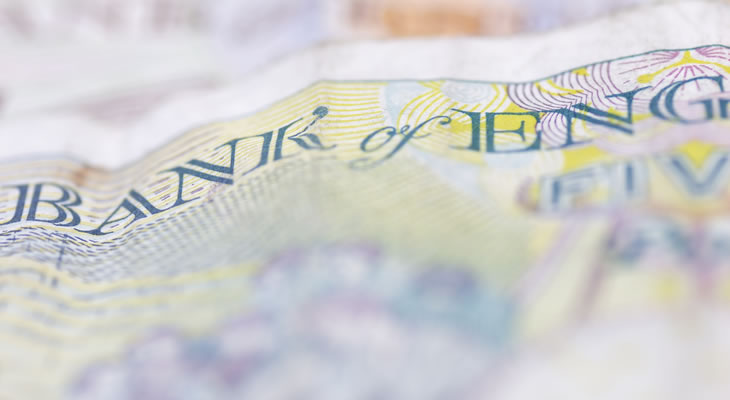- Opinion polls pointed towards ‘Leave’ campaign lead – Pound undermined by rising ‘Brexit’ worries
- Rupee dented by higher Indian inflation – Investors disappointed as measure edged further away from RBI target
- UK employment data bettered expectations – GBP/INR exchange rate strengthened by steady wage growth
- Fed and BoE policy meetings forecast to provoke volatility – No change in interest rates anticipated
Referendum volatility remains a significant downside pressure on the Pound (GBP) although the Rupee (INR) has been struggling to take advantage of increased risk appetite.
‘Brexit’ Uncertainty Prompted GBP/INR Exchange Rate Downtrend
Investors were not impressed with the latest Indian inflation data at the start of the week, prompting the Pound Sterling to Indian Rupee (GBP/INR) exchange rate to rally in spite of increasing ‘Brexit’ concerns. Inflationary pressure was found to have risen further-than-anticipated in May, clocking in at 5.76% rather than the anticipated 5.50% and pushing the measure back away from the Reserve Bank of India’s (RBI) current 4% target. Raising questions over the effectiveness of the central bank’s monetary policy, this saw the Rupee (INR) weaken against rivals on Monday.
The GBP/INR exchange rate was unable to hold its resultant gains for long, however, thanks to a number of opinion polls suggesting an increasing lead for the ‘Leave’ campaign. This seemed to raise the odds of the UK ultimately voting to leave the EU, prompting the Pound to weaken as markets priced in a greater probability of a ‘Brexit’. Consequently, sentiment towards Sterling remained generally muted towards the start of the week, particularly as the May Consumer Price Index report failed to offer a rallying point to investors.
Altogether this did not encourage particular confidence in the outlook of the UK economy, as Jane Foley, Senior FX Strategist at Rabobank, noted:
‘The Pound was under heavy pressure in late 2015 and early 2015 on the back of weak domestic economic data which forced economists to push back their forecasts regarding the first BoE rate hike of the cycle. That said, in recent weeks the referendum has become increasing important for UK markets.’
Pound (GBP) Rallied on Bullish UK Employment and Wage Data
Confidence in the Pound rebounded somewhat on Wednesday morning, however, in the wake of rather more encouraging UK employment data. While the ILO Unemployment Rate unexpectedly dipped from 5.1% to 5.0% in the three months to April, wage growth also bettered forecast, holding steady at 2.0% rather than slowing to 1.7% as anticipated. This stronger showing would seem to suggest that referendum uncertainty had not ultimately been as great a drag on domestic economic conditions as feared, boosting the appeal of Sterling.
The Rupee was generally bolstered ahead of the latest Federal Open Market Committee (FOMC) policy meeting. Demand for higher-yielding assets strengthened thanks to the renewed weakness of the US Dollar (USD), as markets increasingly doubted the Fed’s ability to raise interest rates imminently. As Philip Marley, Senior US Strategist at Rabobank, commented:
‘After the Fed had finally convinced the markets that it was serious about hiking in June/July, the markets are now again pricing in at most one hike this year and not before December (50.1% priced in according to fed funds futures). So if the Fed wants to hike earlier, it will have another communications challenge to overcome.’
With investors lacking conviction that a rate hike is on the cards anytime soon, the appeal of the emerging-market Rupee is likely to remain heightened. Should the FOMC fail to adopt a sufficiently hawkish tone then the GBP/INR exchange rate could return to a downtrend, although any accompanying rally in oil prices could partially mute the Rupee’s gains.
GBP/INR Exchange Rate Forecast: Pound Volatility Expected on BoE Minutes
Although the June Bank of England (BoE) policy meeting takes place on Thursday, markets are assured that there will be no change in interest rates at this particular session. As ‘Brexit’ worries are expected to increasingly dominate the outlook of the Pound, investors will be keen to see the meeting minutes. Policymaker discussion of possible contingency measures could offer some reassurance to markets, as could any further contribution to the referendum debate. Either way, volatility is likely in response to the tone of comments from the Monetary Policy Committee (MPC), which could help to boost the GBP/INR exchange rate further.
With no major Indian ecostats set for release during the remainder of the week the Rupee is expected to take its cues from wider market trends. If risk appetite remains stronger in the wake of the Fed meeting then demand for the Rupee is likely to climb, although increasing ‘Brexit’ concerns could equally prompt a general return to safe-haven demand ahead of the weekend.
Current GBP, INR Exchange Rates
At the time of writing, the Pound Sterling to Indian Rupee (GBP/INR) exchange rate was trending higher around 95.0764, while the Indian Rupee to Pound Sterling (INR/GBP) pairing was slumped in the region of 0.0105.


Comments are closed.